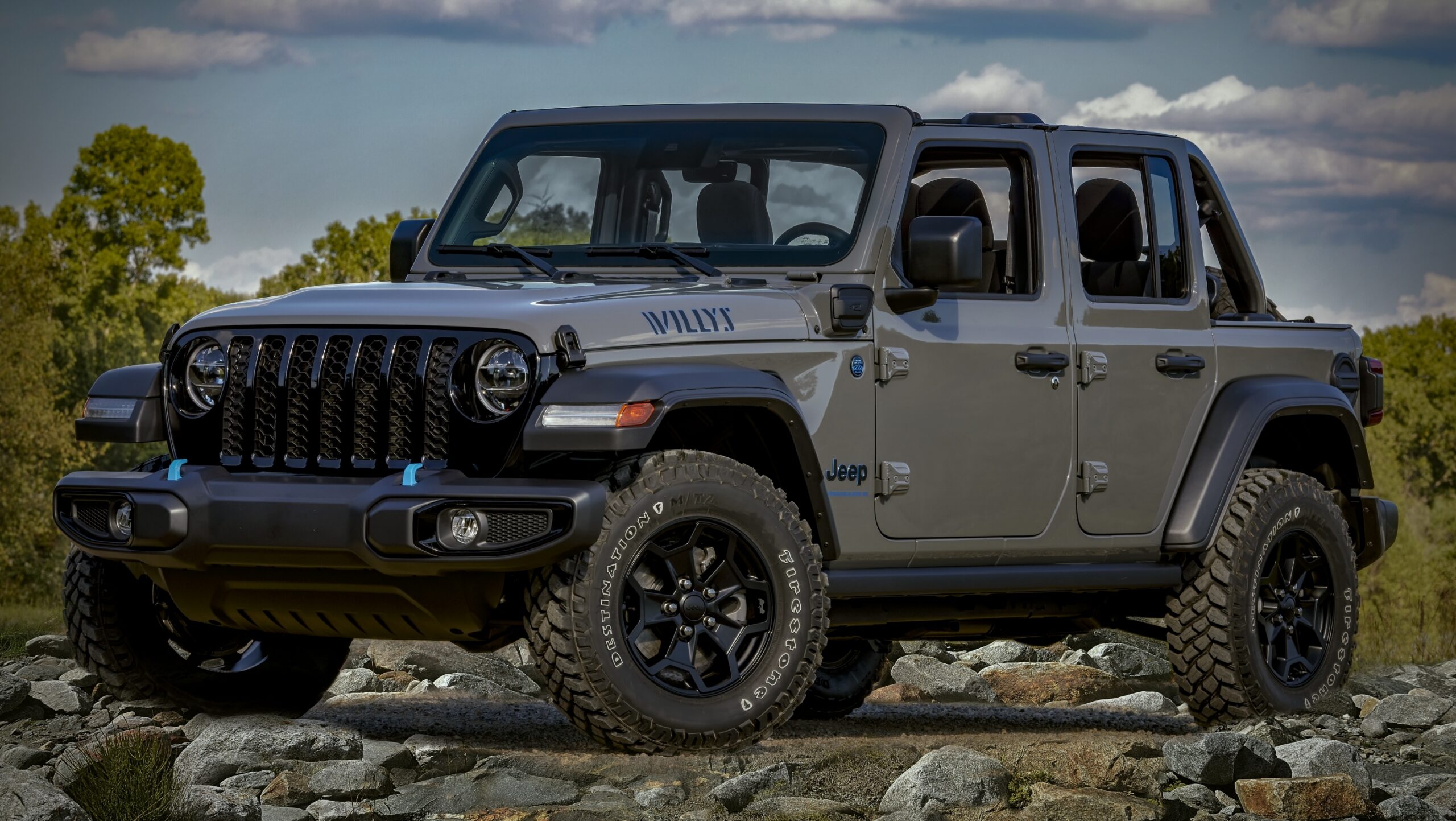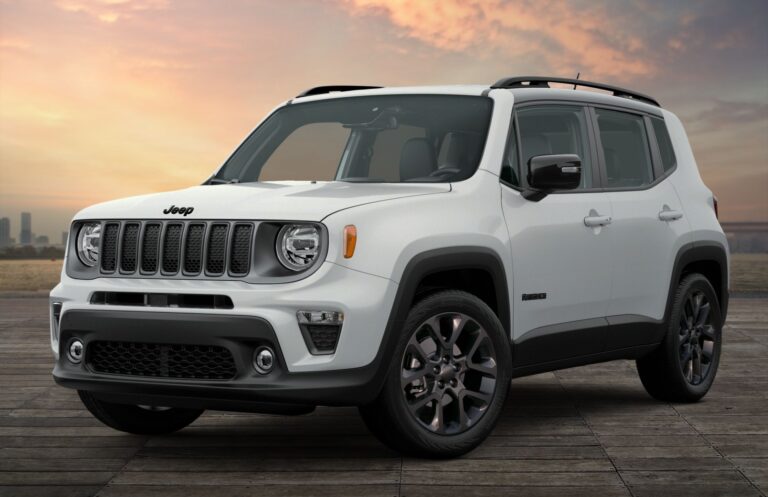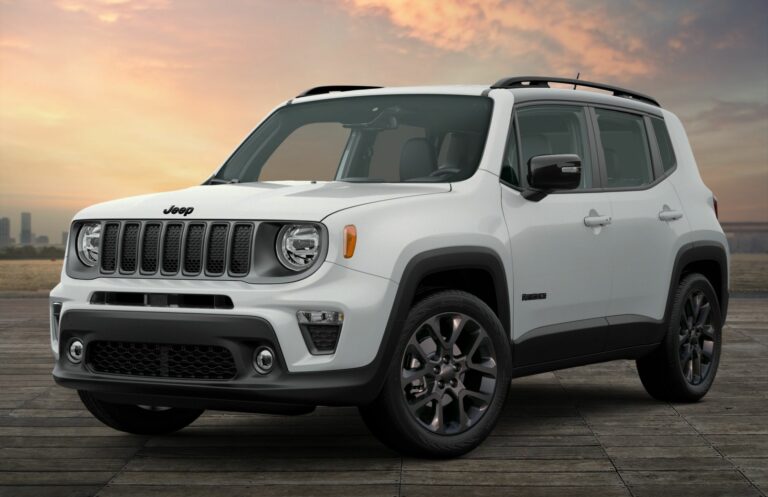Jeep Cherokee Front Bumper: Your Comprehensive Guide to Protection, Performance, and Personalization
Jeep Cherokee Front Bumper: Your Comprehensive Guide to Protection, Performance, and Personalization jeeps.truckstrend.com
The front bumper of your Jeep Cherokee is far more than just a cosmetic piece; it’s a critical component that plays a multifaceted role in the vehicle’s safety, structural integrity, and off-road capability. From absorbing impacts in a minor fender bender to providing crucial recovery points during an adventurous trail run, the front bumper is an unsung hero of the Cherokee experience. Whether you own a classic XJ, a versatile KL, or any generation in between, understanding the nuances of your Jeep Cherokee’s front bumper is essential for maintenance, upgrades, and maximizing your vehicle’s potential.
This comprehensive guide will delve into every aspect of the Jeep Cherokee front bumper, exploring its importance, the variations across generations, the myriad of aftermarket options available, and practical advice for choosing, installing, and maintaining this vital component.
Jeep Cherokee Front Bumper: Your Comprehensive Guide to Protection, Performance, and Personalization
I. The Vital Role of the Jeep Cherokee Front Bumper
At its core, a front bumper is designed to protect. However, for a vehicle as capable and iconic as the Jeep Cherokee, its functions extend far beyond basic impact absorption:
- Safety and Impact Absorption: The primary role of any bumper is to mitigate damage in low-speed collisions and protect occupants. Modern bumpers are engineered with crumple zones and energy-absorbing materials to dissipate kinetic energy, reducing the force transferred to the vehicle’s frame and passengers.
- Pedestrian Protection: Newer bumper designs also incorporate features aimed at reducing injuries to pedestrians in the event of a collision, often through more deformable materials and rounded edges.
- Structural Integrity: The bumper is an integral part of the vehicle’s front-end structure, contributing to its overall rigidity and crashworthiness.
- Aesthetics and Vehicle Identity: The front bumper significantly contributes to the vehicle’s overall styling and brand identity. For the Jeep Cherokee, the bumper often complements its rugged or modern aesthetic.
- Off-Road Functionality: For many Cherokee owners, especially those who venture off the beaten path, the front bumper is crucial for maximizing approach angles, providing sturdy recovery points (like D-ring tabs), and serving as a mounting platform for winches, auxiliary lights, and bull bars.
![]()
II. Generations and Bumper Variations
The Jeep Cherokee has evolved significantly over its production history, and with each generation, the design and functionality of its front bumper have adapted:
- Jeep Cherokee XJ (1984-2001): Often considered the "classic" Cherokee, the XJ’s stock bumpers were relatively simple steel or reinforced plastic designs. The XJ’s robust unibody construction made it a prime candidate for heavy-duty aftermarket steel bumpers, which became incredibly popular for off-road enthusiasts seeking improved approach angles, winch mounts, and superior protection.
- Jeep Liberty KJ (2002-2007) & KK (2008-2012): Marketed as the "Jeep Liberty" in North America, these generations featured more integrated, rounded front bumpers, typically made of composite plastics. While offering decent road protection, their stock designs were less geared towards extreme off-roading, leading to a strong aftermarket for more robust steel alternatives.
- Jeep Cherokee KL (2014-Present): The modern KL Cherokee features a more car-like unibody construction and a sleek, aerodynamic front bumper largely made of plastic and composite materials. These bumpers often house advanced features like parking sensors, adaptive cruise control sensors, and integrated fog lights. The Trailhawk trim level is a notable exception, featuring a more aggressive front bumper design with improved approach angles and prominent red tow hooks, demonstrating a factory acknowledgment of off-road needs. Aftermarket options for the KL often focus on maintaining sensor compatibility while offering increased durability and recovery options.

III. Types of Aftermarket Front Bumpers for Jeep Cherokee
The aftermarket offers a vast array of front bumper options, allowing owners to tailor their Cherokee to specific needs and preferences:
![]()
- Stock Replacement Bumpers: These are typically OEM parts or aftermarket replicas designed to match the original bumper’s appearance and fitment. They are ideal for replacing damaged stock bumpers without altering the vehicle’s original look or functionality.
- Off-Road Bumpers: This category is where the true customization begins, predominantly for XJ and increasingly for KL models:
- Full-Width Bumpers: These extend across the entire width of the vehicle, offering maximum protection to the fenders and front end. They often include integrated winch mounts, D-ring tabs, and auxiliary light mounts. They provide excellent protection but can slightly reduce approach angles compared to narrower options.
- Mid-Width Bumpers: A compromise between full-width and stubby designs, offering good protection while improving approach angles over stock or full-width bumpers.
- Stubby/Shorty Bumpers: Designed for maximum approach angle clearance, these bumpers are typically narrower than the grille, exposing parts of the tires. They are highly favored by rock crawlers and extreme off-roaders but offer less protection to the outer corners of the fenders.
- Hybrid/Modular Bumpers: Some designs allow for customization, where sections can be added or removed (e.g., a base bumper with bolt-on wings or bull bars), offering flexibility.
- Materials:
- Steel: The most common material for heavy-duty off-road bumpers. It offers superior strength and durability but is heavy, adding significant weight to the front end, which can impact suspension.
- Aluminum: Lighter than steel, reducing overall vehicle weight and preserving suspension characteristics. Aluminum is also corrosion-resistant. However, it is typically more expensive and can be less resistant to extreme impacts than steel.
- Plastic/Composite: Standard for OEM bumpers, these are lightweight and cost-effective but offer minimal protection against significant impacts.
IV. Why Upgrade Your Jeep Cherokee Front Bumper?
Upgrading your Cherokee’s front bumper is a popular modification for several compelling reasons:
- Enhanced Protection: A robust aftermarket bumper provides significantly better protection against impacts from trail obstacles, road debris, or even animal strikes, safeguarding critical front-end components.
- Improved Off-Road Capability: Aftermarket bumpers, especially stubby or mid-width designs, dramatically improve your vehicle’s approach angle, allowing you to tackle steeper obstacles without scraping the bumper. Integrated recovery points are also crucial for self-recovery or assisting others.
- Winch Integration: Many off-road bumpers feature a built-in winch plate, a necessity for serious off-road recovery.
- Auxiliary Lighting Options: Most aftermarket bumpers include provisions for mounting auxiliary off-road lights, enhancing visibility during night driving or trail exploration.
- Customization and Aesthetics: An aftermarket bumper can dramatically alter the look of your Cherokee, giving it a more aggressive, rugged, or personalized appearance.
- Durability: Steel or aluminum bumpers are far more durable than factory plastic units, standing up to the rigors of off-road adventures.
V. Choosing the Right Front Bumper for Your Cherokee
Selecting the perfect front bumper requires careful consideration:
- Identify Your Needs and Usage:
- Daily Driver with occasional light trails? A full-width steel bumper or a robust OEM replacement might suffice.
- Serious off-roader/rock crawler? A stubby or mid-width steel bumper with winch compatibility and strong recovery points is essential.
- Looking for aesthetics and mild protection? Consider materials like aluminum or lighter steel options.
- Vehicle Generation and Compatibility: Ensure the bumper is specifically designed for your Cherokee’s year and model (XJ, KJ, KK, KL). Bumpers are generally not interchangeable between generations due to frame and mounting differences.
- Material Choice: Weigh the pros and cons of steel (strength, weight) versus aluminum (lighter, cost) based on your budget and desired performance.
- Desired Features: Do you need a winch mount, D-ring tabs, a bull bar, fog light cutouts, or sensor compatibility? List your non-negotiables.
- Installation Considerations: Some bumpers are bolt-on, while others may require minor cutting or drilling. Consider if you’ll perform the installation yourself or hire a professional. Be mindful of the weight, as a heavy steel bumper might necessitate suspension upgrades (e.g., stiffer springs).
- Legal Considerations: Check local laws regarding bumper protrusions, sharp edges, and lighting requirements.
VI. General Installation Guide for a Jeep Cherokee Front Bumper
While specific steps vary by bumper and vehicle generation, here’s a general overview of the installation process:
Tools Required:
- Socket wrench set (metric and/or SAE)
- Torque wrench
- Pry bar
- Flathead screwdriver
- Wire cutters/strippers (if wiring lights/sensors)
- Safety glasses and gloves
- Jack and jack stands (optional, for better access)
Safety Precautions:
- Always work on a level surface.
- Disconnect the negative terminal of your battery, especially if dealing with electrical components or airbags.
- Use proper lifting techniques if the bumper is heavy.
Steps:
- Preparation: Park your Cherokee on a level surface, engage the parking brake, and block the wheels.
- Disconnect Electrical Components: If your bumper has fog lights, parking sensors, or other electrical connections, carefully disconnect their wiring harnesses.
- Remove Existing Bumper: Locate and remove all bolts, clips, and fasteners securing the stock bumper to the frame rails and fenders. This may involve removing inner fender liners or grille components. Carefully pull the bumper away from the vehicle.
- Prepare Frame Rails: Clean the frame rails where the new bumper will mount. Some aftermarket bumpers may require minor trimming or drilling of the frame, consult the bumper’s specific instructions.
- Mount New Bumper Brackets (if separate): If your new bumper comes with separate mounting brackets, attach them to the frame rails first, ensuring they are snug but not fully tightened.
- Lift and Position New Bumper: With assistance (if heavy), carefully lift the new bumper and align its mounting points with the brackets or frame rails. Start threading a few bolts by hand to hold it in place.
- Secure and Align: Install all remaining bolts and nuts. Before fully tightening, make minor adjustments to ensure the bumper is centered, level, and has proper clearance from the body.
- Torque Down Fasteners: Once aligned, use a torque wrench to tighten all bolts to the manufacturer’s specified torque settings.
- Reconnect Electrical Components: Reconnect all wiring harnesses for lights, sensors, and any other features. Test all lights and sensors to ensure they function correctly.
- Final Inspection: Double-check all bolts, connections, and clearances. Reinstall any removed fender liners or grille components.
VII. Maintenance and Care
Proper maintenance ensures your bumper lasts and performs as intended:
- Regular Cleaning: Wash your bumper regularly to remove dirt, mud, salt, and debris, which can cause corrosion on steel bumpers or degrade finishes.
- Inspect Bolts and Mounts: Periodically check all mounting bolts for tightness, especially after off-road excursions, as vibrations can loosen them.
- Address Rust (for Steel Bumpers): If you notice any chips or scratches on a powder-coated steel bumper, touch them up promptly to prevent rust from spreading. Consider applying a wax or protective coating.
- Check for Damage: After any impact or hard trail run, inspect the bumper for cracks, dents, or bent components. Address any damage promptly to maintain structural integrity.
- Winch Maintenance: If your bumper has a winch, follow the winch manufacturer’s maintenance guidelines, including regular cable inspection and motor checks.
Jeep Cherokee Front Bumper Estimated Price Table
Prices can vary significantly based on the manufacturer, material, features, and the specific generation of Jeep Cherokee. The following table provides estimated price ranges for common bumper types:
| Bumper Type | Material | Key Features | Estimated Price Range (USD) | Notes |
|---|---|---|---|---|
| OEM Style Replacement | Plastic/Composite | Direct fit, basic protection, sensor compatibility | $250 – $800 | Varies greatly by generation (KL typically higher), may not include fog lights or sensors. |
| Aftermarket Steel | Heavy-Duty Steel | Full-width, winch plate, D-ring tabs, light mounts | $700 – $1,800 | Common for XJ, available for KL. Offers maximum protection. Can significantly add weight. |
| Aftermarket Steel | Heavy-Duty Steel | Stubby/Mid-width, winch plate, D-ring tabs | $600 – $1,500 | Popular for XJ & KL (Trailhawk-style). Improves approach angle. |
| Aftermarket Aluminum | Aircraft-Grade Aluminum | Full/Mid-width, winch plate, D-ring tabs | $1,000 – $2,500 | Lighter alternative to steel, corrosion-resistant. Higher cost. |
| Specialized/Modular | Steel or Hybrid Materials | Custom configurations, brush guards, tire carriers | $900 – $3,000+ | Includes bumpers with integrated brush guards, or modular designs allowing add-ons. Price depends on complexity and features. |
Note: Prices are estimates and do not include shipping, installation costs, or additional accessories like winches, lights, or sensors. Always check with reputable retailers for current pricing.
Frequently Asked Questions (FAQ) about Jeep Cherokee Front Bumpers
Q1: Can I install an XJ bumper on a KL Cherokee?
A1: No, generally, bumpers are not interchangeable between different generations of the Jeep Cherokee (e.g., XJ, KJ, KL). Each generation has a unique frame, mounting points, and body dimensions, making direct swaps impossible without extensive custom fabrication.
Q2: Do aftermarket bumpers affect airbag deployment?
A2: Reputable aftermarket bumper manufacturers design their products to work with the vehicle’s existing safety systems, including airbag sensors. However, significant modifications or poorly designed bumpers can potentially interfere. Always choose bumpers from trusted brands and consult their specifications regarding safety system compatibility.
Q3: How much weight does a steel bumper add, and will it affect my suspension?
A3: A heavy-duty steel front bumper can add anywhere from 75 to 200+ pounds to the front end of your Cherokee. This added weight can cause the front end to sag, negatively impacting ride quality, handling, and headlight aim. It is often recommended to upgrade your front coil springs or shocks (e.g., to heavy-duty or lifted options) to compensate for the added weight and maintain proper suspension geometry.
Q4: Are aftermarket winch bumpers legal on public roads?
A4: In most regions, yes, winch bumpers are legal. However, some areas may have specific regulations regarding bumper protrusions, sharp edges, or overall vehicle length/width. Always check your local vehicle modification laws to ensure compliance.
Q5: What’s the main difference between a full-width and a stubby bumper?
A5: The main difference is coverage and approach angle.
- Full-width bumpers extend across the entire width of the vehicle’s front end, providing maximum protection to the fenders and headlights. They offer excellent overall protection but can limit approach angles on very steep obstacles.
- Stubby bumpers are much narrower, often only covering the width of the grille or frame rails, leaving the outer edges of the tires exposed. This design significantly improves the approach angle, making them ideal for extreme rock crawling, but offers less protection to the vehicle’s corners.
Q6: Can I install a bumper myself?
A6: For many enthusiasts, installing a bolt-on aftermarket bumper is a manageable DIY project with basic tools and some mechanical aptitude. However, heavy steel bumpers may require a second person for lifting and positioning. If the installation involves cutting, welding, or complex wiring, professional installation is recommended. Always follow the manufacturer’s specific instructions.
Conclusion
The Jeep Cherokee front bumper is a cornerstone of the vehicle’s identity, performance, and safety. From its foundational role in impact protection to its pivotal contribution to off-road prowess, understanding this component is key to maximizing your Cherokee’s potential. Whether you’re replacing a damaged stock unit, aiming for improved trail capability, or simply enhancing your vehicle’s aesthetic appeal, the vast array of aftermarket options ensures there’s a perfect bumper out there for every Cherokee and every adventure. By carefully considering your needs, researching compatible options, and ensuring proper installation and maintenance, your Jeep Cherokee’s front bumper will serve as a reliable guardian and a powerful statement of its readiness for any challenge the road—or trail—throws its way.



